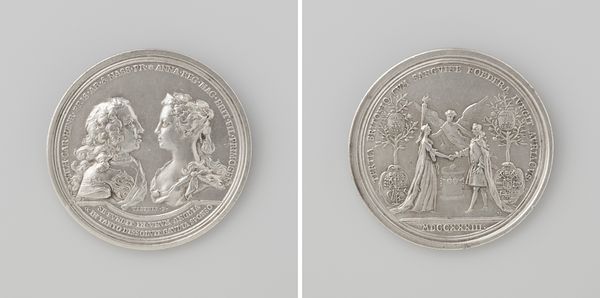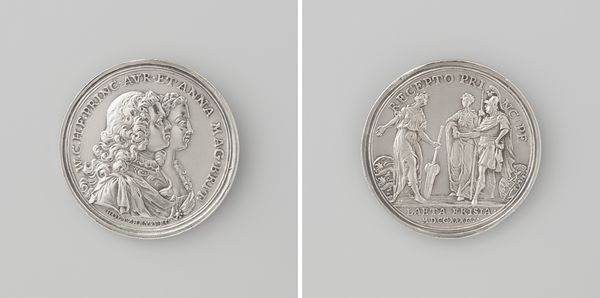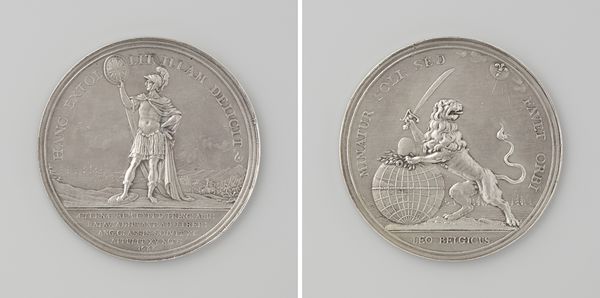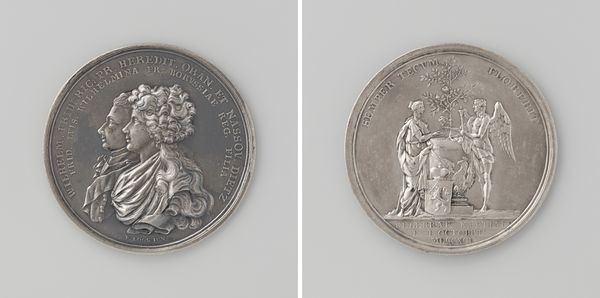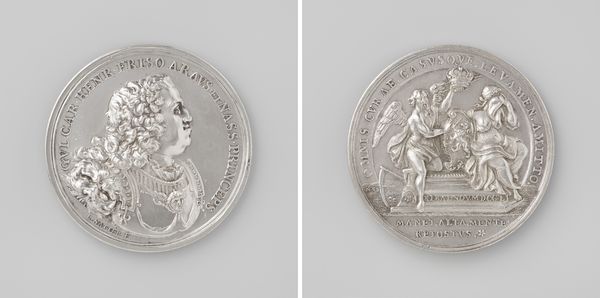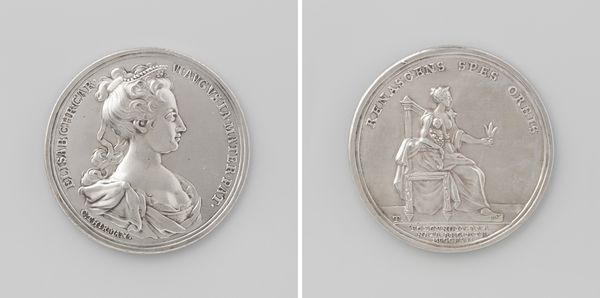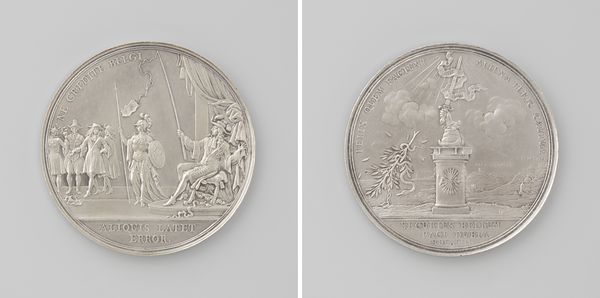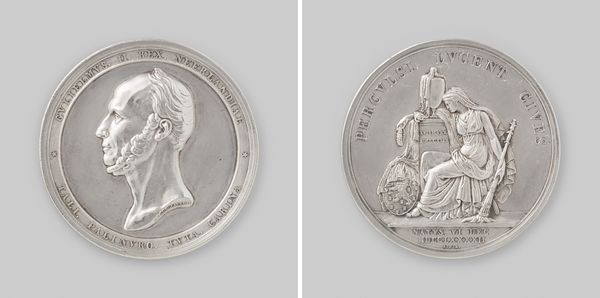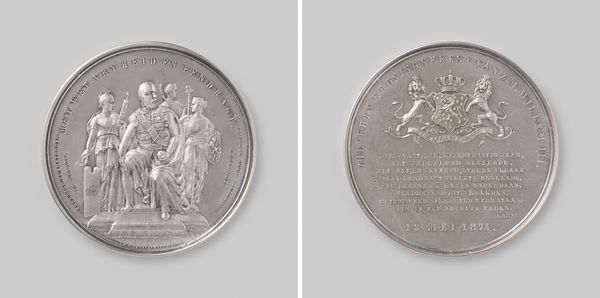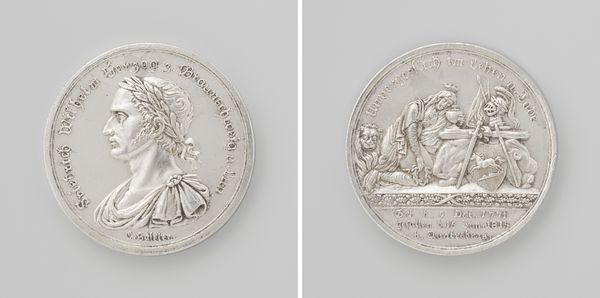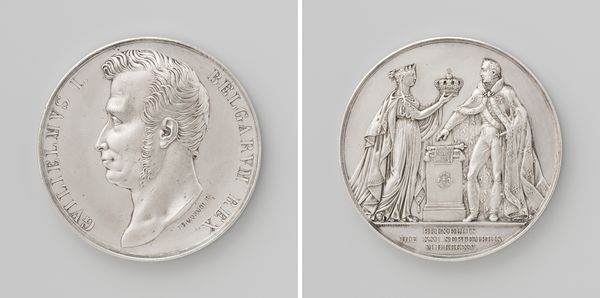
print, metal, engraving
#
portrait
#
baroque
# print
#
metal
#
history-painting
#
engraving
Dimensions: diameter 4.4 cm, weight 24.61 gr
Copyright: Rijks Museum: Open Domain
Editor: So, this striking silver piece is a medal called "Marriage of William IV to Princess Anne of England in London," made in 1734 by Martin Holtzhey. The engraving really captures a sense of Baroque opulence, but in miniature! What jumps out to you when you see this? Curator: As a materialist, I'm immediately drawn to the means of its production and intended consumption. Minted metal isn't just a medium; it’s a declaration. Currency, commemoration— Holtzhey uses this metal to both record and legitimize power. Editor: That's interesting. So you’re saying the very material makes a statement? How so? Curator: Consider the social context: who commissions this? Who handles it? Silver wasn't democratically available. Each strike of the die embodies economic power, immortalizing the alliance not just in image, but in precious metal meant to circulate amongst a specific class. This transforms the concept of marriage into an asset to be handled materially. The choice of metal is rarely arbitrary; it tells us much about the artwork's purpose and intended audience. Editor: I hadn't thought about it that way! I was so focused on the symbolism of the marriage itself. Curator: Symbols are deliberately made from a substance and spread with intention. The choice and process dictate much. Was this destined to be locked away in aristocratic cabinets, handled as a token of future promise, or distributed widely as propaganda? The physical circulation mirrors, in many ways, the desired circulation of influence. Editor: That makes me see it so differently now. I’m starting to see this isn’t just art, but a meticulously crafted object for social positioning and projecting power. Thank you. Curator: And hopefully you start seeing the material's history within many things now.
Comments
No comments
Be the first to comment and join the conversation on the ultimate creative platform.
